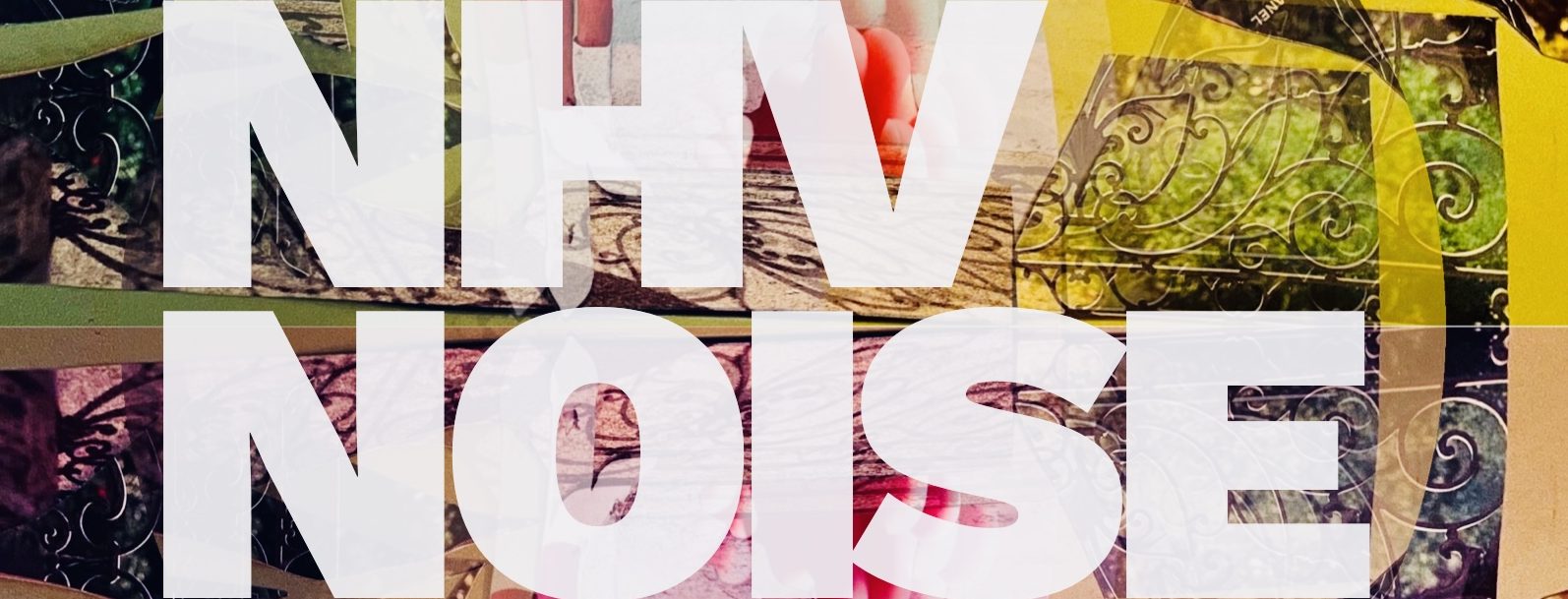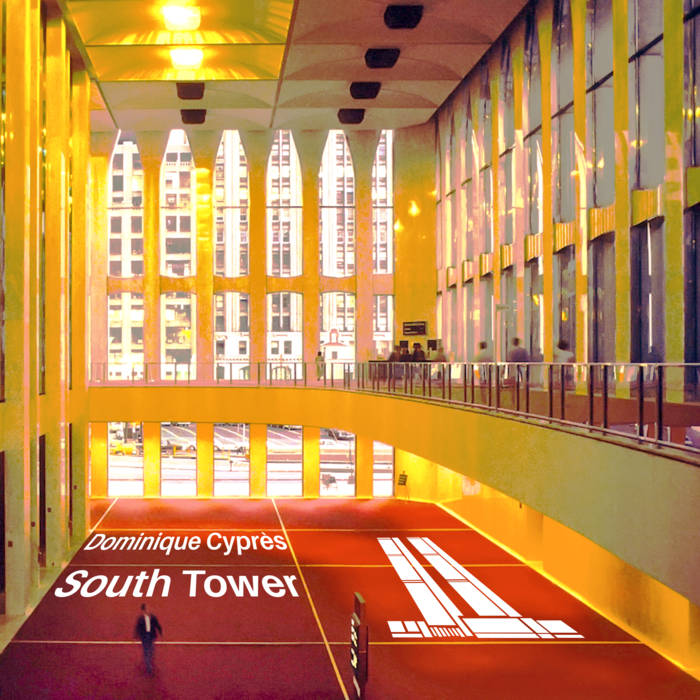By: Renee Zon
Dominique is a friend of mine who is an amazing creative in almost all forms as far as I can tell. He recently interviewed me for a recent project I released, and even the questions seemed to carry a level of respect and depth I would never expect. The amount of thought and intention he puts into all of his work is inspiring.
He recently released a project on Bandcamp titled “South Tower” which is a sort of nod to the first of the grand shared traumas the millennial generation experienced. Unfortunately, only the first of many.
South Tower is an introspective on how media scandalized tragedy, and how that scandalization numbs the pain that we need to feel in order to process and overcome these emotions.
Dominique and I are the same age, which makes us both aged 10 at the time that 9/11 happened. My personal experience learning about the 9/11 attack is quite burned into my mind, though I can’t say I have considered it’s effect on me. Throughout the lives of our generation, we have basically been bombarded with tragedy after tragedy, and unfortunately had to experience the distasteful advantageousness that the media uses to turn those tragedies into profit.
Just the other day, I was speaking to a friend of mine about how he can clearly remember seeing the corpses of Osama Bin Laden’s sons projected on national news for hours. I myself, can clearly remember the Nokia quality video which some reporter leaked from the Saddom Hussein hanging.
Looking back on these things doesn’t make them any better, in fact the clarity of foresight almost makes them more painful. No one has taken the lead on confronting or absolving the guilt, trauma, or pain we likely all feel inside, and likely no one in power ever will. Dominique decides to do so himself, in an emotional undertaking which stands above most I can think of.
Dominique has created a piece of art which attempts to give that specific tragedy the respect in requires, in order for us to process it. It treats death and war as its subjects, and paints a picture of our society which is almost damning, while at the same time creating space for thought and emotion so that the children in us can process and hopefully learn from those shared tragedies.
The album has 15 songs, but for brevity, I am only going to cover about half of them. I highly recommend the reader listens to the entire album from start to finish, because there is clear intent in the order of the pieces which adds extra meaning to each song.
Track 3 is a synth performance of “Le Carnaval des animaux: XIII. Le cygne” by French composer Camille Saint-Saëns. I am not sure if lack of capitalization is intended, but the inclusion of the song seems to point towards the animalization of people in the aftermath of 9/11. A familiar and quiet ballad, which Dominique uses to set the scene of how American society came together in its shared anxiety to destroy something beautiful.
We are the carnival of animals, and the swan is an unfortunate and delicate casualty we strangled in our shared anxiety. Dominique tries to come to terms with the racism and cruelty which was freeform and accepted in the aftermath of the attack. He points to the victims, American Muslims, as the delicate swan, and uses this beautiful piece to tie us back to an age when art was meaningful and not exploitative.
Many of the tracks on this album hold the same level of gravitas as a piece like The Swan does. The intention and meaning is flaring. “Dunes Beyond Omelas” is referring to a philosophical work from the 1970’s by Ursula K. Le Guin. I am not completely familiar with the philosophy of Le Guin, but I want to be now. It seems to refer to a suffering child in an unfeeling dystopia, that one child’s suffering is the catalyst for the rest of societies happiness. We are that child, and we live our entire life with the horror of men falling from the top floor of the twin towers.
The song is a dance of the march of constant drums over a crying drone, perhaps like said child. The sounds echo around your head as an arpeggio creates a wall around you, perhaps wanting to protect that child. Then an angelic voice, very reminiscent of the previous track. A beautiful piece which stands up next to the work of Saint-Saëns.
“The War Plant” is next, and features a 1950’s style announcer seeming to offer a hand, giving your father a job… It is extremely well paid, but the caveat is that the job is at the so called war plant. Like he is being called to be the torturer of the child of Omelas, how long can we as a society possibly continue this death march? Turning men into drones and cogs in a wheel, wholly to profit on the death of other men, and even the trauma of children.
The level of detail and craft, musically as well as conceptually is constant. Each piece ties into the next, and each with its own beautiful melody distracting us from the march of time and war. I imagine “Top of the World”, the following track, to be a vision into being an extremely successful diplomat or financier whose entire life ends in being a symbol via being blown to pieces. A life of hard work, perhaps charity and gratitude, intelligence… Only amounting to a headline as well as that shared trauma. How much potential was lost in those men and women who fell to their deaths? How much good had they done in their life, only to ultimately be a sacrifice… to be forgotten about 20 years later.
“Unmanned Aerial Violence” is next, bringing us to a new theme. Throughout everything, this album has a sort of disassociation of mind. The beautiful melody over the drums. Like an unmanned drone, or a drone operator thinking he is playing a video game.
“Ground Zero After Dark” is the zombie level… when the pile of corpses comes back to haunt us in our dreams. Thousands dead, a terrible wind blows around as we are left in a desolate landscape of death.
“43,600 Windows” quantifies the destruction, like many headlines attempted to quantify the lives and deaths of every single individual who was a part of that sacrifice. It is easier to imagine 43,600 windows than it is to imagine 3000 dead. At the same time, the beauty of that facade of sky painted windows is a testament to that potential. The souls of the dead can fly to heaven over the backdrop of the soul of a beautiful building… The South Tower being the stairway to the clouds.
A skyscraper could be an interesting metaphor of the potential for beauty and innovation we share as a species… Even if it is only a phantom in our memories at this point.
“Unknown Knowns” is next and starts with a randomized arpeggiator, followed by timpani war drums. A reference to the words of George W. Bush, with foresight it seems so obvious how manipulative this phrase is. And yet, as children we watched the adults around us bought into this nonsense in an attempt at self-soothing. Each person lining up to join the death march of racism and war, how can we possibly come to terms with something like this? It feels that disconnection may be the only way, but Dominique’s work sets a better, stronger, and more meaningful standard.
If we create instead of destroy, we can open our minds to the faults of Omelas… Can we be the ones who walk away? I hope so.
I’ll end my review here, and allow the reader to contemplate the other half of the album themselves. For me personally, this project is a masterwork of modernity mixed with a classical philosophy. It’s meaning and depth is palatable, and it invokes thought without forcing it. I highly recommend anyone with a taste for high art to listen to this album intently. Its message is one we all need to confront, and Dominique paints a beautiful musical picture in doing so.
Listen to Dominique’s album South Tower here.


Leave a comment